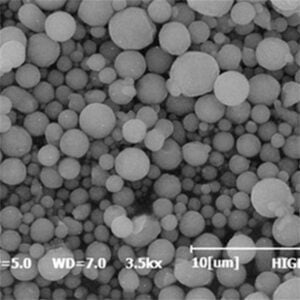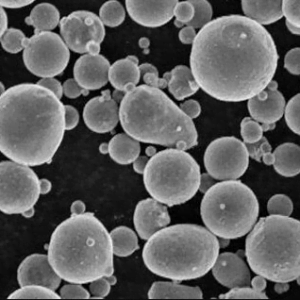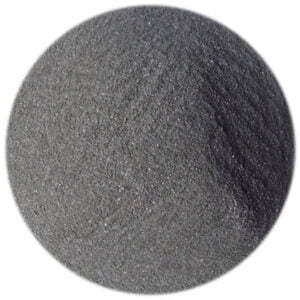FeSiCr powder for Network System
Table of Contents
In the ever-evolving world of network systems, ensuring reliable power delivery is paramount. Data centers, communication hubs, and critical infrastructure all rely on uninterrupted electricity flow to function. This is where FeSiCr, a powerful alloy composed of iron (Fe), silicon (Si), and chromium (Cr), steps onto the scene. But what exactly is FeSiCr powder, and how does it contribute to a network system’s strength and resilience?
Understanding FeSiCr: A Material Powerhouse
FeSiCr powder is a metal alloy meticulously crafted by combining iron, silicon, and chromium in specific proportions. This potent blend imbues the powder with a unique set of properties, making it a highly sought-after material in various applications, particularly within the realm of network systems.
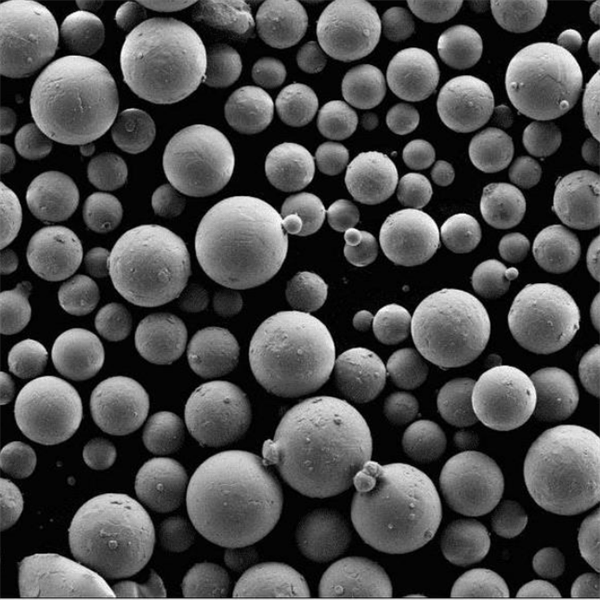
Composition, Properties, and Characteristics of FeSiCr Powders
| Property | Description |
|---|---|
| Composition | FeSiCr powder typically consists of 70-80% iron, 1-5% silicon, and 15-20% chromium. Variations in these percentages can tailor the powder’s characteristics for specific needs. |
| High Strength | FeSiCr boasts impressive tensile and yield strength, allowing it to withstand significant mechanical stress without deformation. This translates to robust network components that can endure harsh operating environments. |
| Excellent Oxidation Resistance | FeSiCr exhibits superior resistance to oxidation at elevated temperatures. This property is crucial in network systems, where components often generate heat, potentially leading to corrosion and performance degradation. |
| Enhanced Wear Resistance | The presence of chromium in FeSiCr contributes to exceptional wear resistance. This is particularly beneficial for network components subject to friction and movement, ensuring extended component lifespan. |
| Good Electrical Conductivity | While not its primary strength, FeSiCr powder demonstrates adequate electrical conductivity, sufficient for many network system applications. |
| Magnetic Properties | Depending on the specific composition, FeSiCr can exhibit either ferromagnetic or paramagnetic behavior. This characteristic can be tailored for specific network component needs. |
Applications of FeSiCr Powder in Network Systems
FeSiCr powder finds its place in a multitude of network system components, each benefiting from its unique properties. Here are some prominent examples:
| Application | Benefits of FeSiCr Powder |
|---|---|
| Busbars and Connectors | FeSiCr’s high strength and wear resistance make it ideal for busbars and connectors, crucial components for distributing electrical power within network systems. These parts require the ability to handle significant currents without succumbing to wear and tear. |
| Heat Sinks and Dissipation Components | Due to its excellent oxidation resistance, FeSiCr powder proves valuable in heat sinks and dissipation components. This is because these elements manage heat generated by network equipment, and FeSiCr’s resistance to high temperatures ensures component longevity and efficient heat dissipation. |
| EMI/RFI Shielding | The magnetic properties of FeSiCr powder can be harnessed for electromagnetic interference (EMI) and radio frequency interference (RFI) shielding. This protects sensitive network equipment from electromagnetic disruptions, maintaining data integrity and system functionality. |
| Additive Manufacturing (AM) Applications | FeSiCr powder shines in the realm of additive manufacturing (AM) techniques like 3D printing. This allows for the creation of customized network components with complex geometries, offering greater design flexibility and potentially optimizing network system performance. |
Specifications, Sizes, and Grades of FeSiCr Powders
FeSiCr powders come in various specifications, sizes, and grades to cater to diverse network system requirements. Here’s a breakdown of some key factors to consider:
| Factor | Description |
|---|---|
| Particle Size | FeSiCr powder particle size typically ranges from 10 to 150 microns, impacting material flowability and final component properties. Finer powders offer better surface finish but might require specific processing techniques. |
| Flowability | The powder’s flowability determines its ease of handling and suitability for different AM or metal injection molding (MIM) techniques. High flowability ensures smooth processing and consistent component density. |
| Apparent Density | This parameter refers to the weight of powder per unit volume. It influences material usage and packing efficiency during the manufacturing process. |
| Grades | Various grades of FeSiCr powder exist, with slight compositional variations tailored for specific applications. For example, some grades may prioritize wear resistance, while others might focus on improved electrical conductivity. |
Suppliers and Pricing of FeSiCr Powders
Several leading metal powder suppliers offer FeSiCr powder in various specifications. Here’s a glimpse into some prominent players:
Pricing of FeSiCr Powders
Unfortunately, pinpointing a precise cost for FeSiCr powder is challenging due to several factors. Here’s what influences the price:
- Powder Specifications: Particle size, flowability, and grade all play a role. Finer powders with superior flowability and specific grade characteristics generally command a higher price.
- Order Quantity: Bulk purchases typically benefit from economies of scale, leading to lower per-unit costs compared to smaller orders.
- Market Fluctuations: Global metal prices and supply chain dynamics can impact the cost of raw materials, ultimately affecting FeSiCr powder pricing.
A Glimpse into Specific FeSiCr Metal Powders
Here’s a breakdown of ten prominent FeSiCr metal powders, highlighting their key features and potential applications within network systems:
| Metal Powder | Description | Network System Applications |
|---|---|---|
| AMPCOR 9740 (Höganäs AB) | This FeSiCr powder boasts a balanced composition (75% Fe, 4% Si, 21% Cr) with excellent wear resistance and high strength. | Ideal for busbars, connectors, and other components requiring exceptional mechanical durability. |
| Höganäs AMPCOR 9741 (Höganäs AB) | This variation features a slightly higher chromium content (73% Fe, 3% Si, 24% Cr) compared to AMPCOR 9740, further enhancing wear resistance. | Particularly suitable for applications encountering significant friction and wear, such as sliding contacts and moving parts. |
| Carpenter Incus 316L (Carpenter Additive Powder Products) | This FeSiCr powder offers a composition similar to 316L stainless steel (70% Fe, 1% Si, 19% Cr, with additions of Ni and Mo). It boasts excellent corrosion resistance and biocompatibility. | While not strictly network system-specific, this powder could be valuable for network components potentially exposed to harsh environments or requiring a level of biocompatibility. |
| AM BASF AMثير (AMBASF) (BASF) | This FeSiCr powder from BASF features a unique name (“AMثير” translates to “AM Power” in Arabic) and boasts high strength alongside good flowability. | Well-suited for AM applications within network systems due to its ease of processing and strong mechanical properties. |
| SLM Solutions FeSiCr15 (SLM Solutions) | This offering from SLM Solutions prioritizes a balance between strength and electrical conductivity (75% Fe, 3% Si, 17% Cr, with additions of Mn). | A potential choice for network components requiring both structural integrity and adequate electrical performance. |
| LPW FeCrSi (LPW Technology) | LPW Technology’s FeCrSi powder offers a standard composition (75% Fe, 4% Si, 21% Cr) with good overall properties. | A versatile option for diverse network system applications where a balance of strength, wear resistance, and oxidation resistance is desired. |
| EOS M 290 (EOS GmbH) | This FeSiCr powder from EOS boasts a slightly lower chromium content (73% Fe, 3% Si, 19% Cr) compared to some competitors. However, it offers excellent processability for AM techniques. | A good choice for network system components requiring high-precision 3D printing and prioritizing ease of manufacturing. |
| AMBIT FeSiCr (AMBIT Powder) | This FeSiCr powder from AMBIT Powder focuses on a balanced composition (73% Fe, 3.5% Si, 19.5% Cr) with good overall properties for diverse applications. | Another versatile option for various network system components where a balance of functionalities is desired. |
| Proto Labs FeSiCr (Proto Labs) | Proto Labs offers a standard FeSiCr powder with a typical composition (75% Fe, 4% Si, 21% Cr). | A readily available option for prototyping network system components using AM techniques. |
| ExOne FeSiCr (ExOne) | ExOne’s FeSiCr powder prioritizes printability for binder jetting AM techniques. Its specific composition details are not readily available. | Potentially a good fit for network system components manufactured via binder jetting AM, given its focus on printability. |
Advantages and Disadvantages of FeSiCr Powders for Network Systems
FeSiCr powder offers a compelling proposition for network system applications, but it’s vital to understand its strengths and weaknesses to make informed decisions.
Advantages:
- Exceptional Strength and Wear Resistance: FeSiCr excels in these areas, making it ideal for components like busbars and connectors that handle significant electrical currents and potential wear.
- Superior Oxidation Resistance: Network equipment often generates heat, and FeSiCr’s resistance to oxidation at elevated temperatures ensures component longevity and efficient heat dissipation in heat sinks and dissipation components.
- Enhanced EMI/RFI Shielding: The magnetic properties of FeSiCr can be leveraged to create effective electromagnetic and radio frequency interference shielding, safeguarding sensitive network equipment from disruptive electromagnetic waves.
- Versatility in Additive Manufacturing: FeSiCr powder shines in AM techniques, allowing for the creation of intricate network components with complex geometries. This fosters design flexibility and potentially optimizes system performance.
- Improved Sustainability: Compared to traditional manufacturing processes that generate significant waste, AM techniques using FeSiCr powder can offer a more sustainable approach, potentially reducing material waste.
Disadvantages:
- Cost: FeSiCr powder can be more expensive than some traditional materials used in network systems. Factors like particle size, flowability, and grade all influence the price.
- Limited Availability: While readily available from major suppliers, FeSiCr powder might not be as widely accessible as some commonly used network system materials.
- Processing Considerations: AM techniques using FeSiCr powder might require specialized equipment and expertise compared to traditional manufacturing methods.
Choosing the Right FeSiCr Powder for Your Network System Needs
Selecting the optimal FeSiCr powder hinges on several factors specific to your network system requirements:
- Component Functionality: Consider the primary function of the component. Does it prioritize strength, wear resistance, electrical conductivity, or a combination?
- Manufacturing Technique: Will you be using AM techniques or traditional methods? Different FeSiCr powders cater to specific AM processes.
- Cost Considerations: Balance the cost of the powder with its performance benefits and the overall project budget.
- Design Complexity: If your network component requires intricate geometries, AM with FeSiCr powder might be a perfect fit.
Consulting with a qualified metal powder supplier and a network system engineer is highly recommended. They can guide you through the selection process, ensuring you choose the most suitable FeSiCr powder for your specific application.
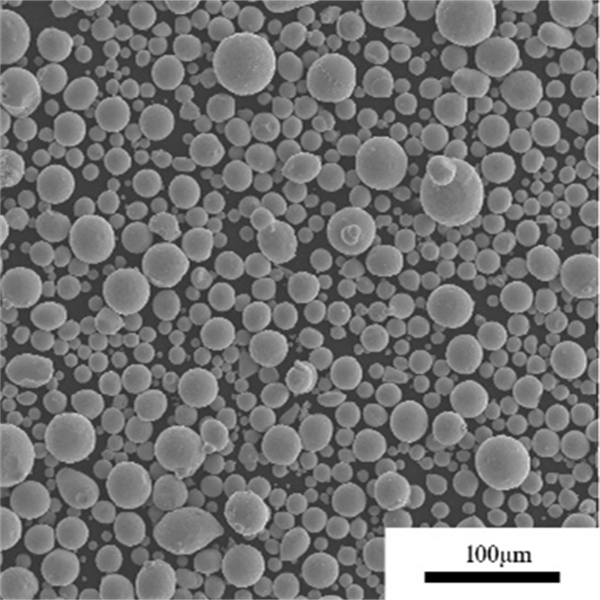
FAQs
Q: Is FeSiCr powder safe to handle?
A: While generally safe, proper handling procedures for metal powders are recommended. This includes wearing appropriate personal protective equipment (PPE) like gloves, safety glasses, and a respirator when handling the powder in bulk.
Q: Can FeSiCr powder be recycled?
A: Yes, depending on the specific composition and any contaminants. Some AM techniques allow for the recycling of unprinted FeSiCr powder, potentially reducing waste and promoting sustainability.
Q: How does FeSiCr powder compare to other materials used in network systems?
A: Traditional materials like copper offer superior electrical conductivity, but FeSiCr excels in strength, wear resistance, and oxidation resistance. Aluminum offers lightweight properties, but FeSiCr boasts greater mechanical strength. The choice ultimately depends on the specific needs of the network component.
Q: What is the future outlook for FeSiCr powder in network systems?
A: As network systems become increasingly complex and require enhanced reliability, FeSiCr powder is poised to play a more prominent role. Advancements in AM technology and the potential cost reduction of FeSiCr powder could further solidify its position as a valuable material for future network infrastructure.
Share On
MET3DP Technology Co., LTD is a leading provider of additive manufacturing solutions headquartered in Qingdao, China. Our company specializes in 3D printing equipment and high-performance metal powders for industrial applications.
Inquiry to get best price and customized Solution for your business!
Related Articles
About Met3DP
Recent Update
Our Product
CONTACT US
Any questions? Send us message now! We’ll serve your request with a whole team after receiving your message.

Metal Powders for 3D Printing and Additive Manufacturing
COMPANY
PRODUCT
cONTACT INFO
- Qingdao City, Shandong, China
- [email protected]
- [email protected]
- +86 19116340731










